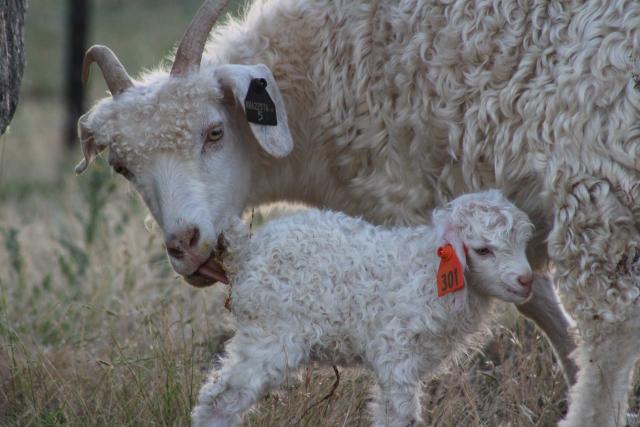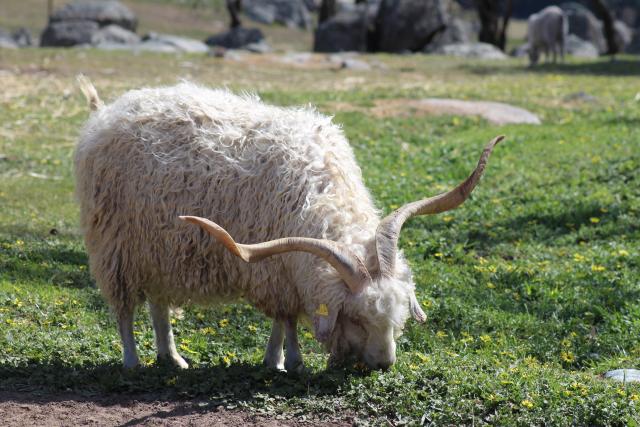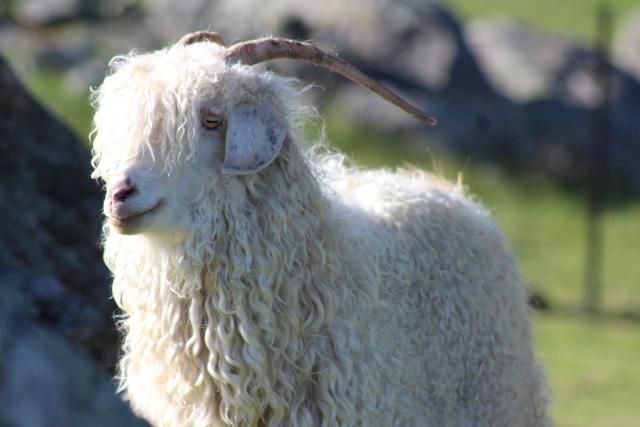By Judy Barnet
Sunday was a big day on the farm.
We wormed and marked all the lambs although we couldn’t tag as the tags still haven’t arrived.
I thought it was going to be a real Dad and Dave show as we haven’t finished putting our yards together.
However, things went better than I had dared hope and Plan B just sort of worked itself out.
Despite plenty of grass a few of the ewes still don’t look as good as they should.
They are the old ones I should have got rid of but didn’t.
There are still a few ewes left to lamb but I don’t mind having their delivery spread out as the guests love seeing new lambs.
We will have to yard the Merinos this coming weekend as I am worried about fly strike.
I think they will need to be crutched in the next few weeks.
I have decided that from now on whatever jobs on “the list” are not finished by 3pm on a Sunday it would just be too bad.
We are going to take those few hours on a Sunday for relaxing, lighting a barbecue down at the dam or going for a drive, whatever takes our fancy.
One morning recently as I fed the ducks and let them out for the day I pondered as to why I had not been keen on Muscovies in the past.
They are so personable and chat away to me as I offer them feed from my hand and give them a quick pat.
They are a big hit with the guests as well. A couple of
days later I let the ducks out early without feeding them as the sheep were hanging around.
When I returned to the feed shed which is in our house yard I called them thinking I could feed them in there out of the gaze of the sheep.
I loudly called, “duck duck, duck duck,” and was rewarded by three of them flying in like kamikaze pilots from out in the cow paddock and landing at my feet.
I laughed uproariously thinking it would be great trick to impress the cottage guests.
Muscovies are good flyers although our original black and white bird doesn’t seem to fly, only the three white ones.
Two days later the joke was on me though and I quickly remembered why I chose to keep Runners and other breeds of duck rather than Muscovies.
Checking the cottage verandah I was horrified to find it covered in duck poop.
You may recall that we have just had this verandah replaced so the timber is new.
Hosing it off it has left dark stains in the timber.
All I can say is that in time I hope it blends in and adds character.
If the ducks continue to decide the verandah is a good resting spot I will have to reconsider their fate!
Tom and Lottie will be returning on the 26 October, along with Lottie’s parents who are arriving from the UK and Tom’s brother, Charlie, who has been in Oz for a few weeks now.
We are really looking forward to meeting them.
I am keeping my fingers crossed that this crazy rain event has finished and we will have a bit of sunshine to offer them!
Angora goats were first imported into Australia in 1832 and 1833 by Alexander Riley, of Raby, NSW, from M. Polonceau’s flock in France. Purebred Angoras from the herd of the Duchess of Berri were imported in 1833.
M. Polonceau of France started crossbreeding Angoras and Cashmeres in 1822 and the type was fixed in 1827.
Purebred Angoras were imported from Turkey, the home of the Angora goat, from 1853 to 1873.
There was every possibility that some were upgraded Angoras originating from the “Turkish Native or “Anatolian Black“, a fleece and meat goat, as Turkey had begun an upgrading program to rapidly increase numbers.
By 1870 the original Angora in Turkey was virtually extinct.
In 1856, seven pure bred Angora goats were imported from Turkey by Mr Sichel and these went to the Acclimatisation Society of Victoria, in Royal Park, Melbourne.
In 1863 twelve bucks arrived at Royal Park from France, presumably the M. Polonceau type.
In 1865 a further ninety-eight Angoras were imported from Turkey and joined the Royal Park flock.
By 1870, the Royal Park flock, which had greatly increased, was dispersed.
Mr Wilson, who was associated with Royal Park, took fifty of the best to his Wimmera property and the remainder were sold to various purchasers.
South African blood was introduced into Trawalla, Victoria in 1873 although the type and number is not known.
John Giles of Bairnsdale owned a flock in the latter part of the 19th century and the Banksia stud, started in 1904, was based on Giles and Peak Station blood, which in turn was based on Kempe’s flock started in 1888 from Price Muriel’s flock. Price Muriel imported one hundred and eighty-four Angoras from Turkey between 1869 and 1873.
Muriel sold his flock around 1890 and Mr E.C. Kempe bought one hundred and forty-four to add to his flock.
In 1901 Kempe, in partnership with Sir Sydney Kidman, bought Peak Station and in 1902 there were one thousand Angoras on Peak Station.
The number grew to over two thousand and they were said to be of very good quality. The flock was dispersed at the time of Kempe’s death in 1906 and some of the flock was purchased by Banksia.
During the 1920s and 1930s there was virtually no interest in Angoras in Australia and by 1950 all interest had gone and the only flock with a history going back to the good old days was purchased Banksia.
For all practical purposes the flocks built up in the 19th and very early 20th centuries had been killed off or allowed to go feral.
The Banksia stud of Mr Barton was registered with the Goat Breed Society of Australia in 1947.
By 1963 fourteen studs were registered with this Society.
Volumes 5 to 16 of the Goat Breed Society of Australia record the first five hundred that were pure bred.
Later volumes include animals that cannot be traced directly and solely to the Banksia purebred flock.
With the upsurge of interest in the Angora goat, an upgrading program began in the 1960’s using feral and dairy goats.
All Australian Heritage Angora goats trace their pedigrees back to the purebred Banksia flock.
There are only three registered studs breeding the Australian Heritage Angora goat.
The breed is thrifty, hardy and has clean legs and an open face that doesn’t need to be wigged to enable clear vision.
They have quiet temperaments, are easy animals to look after and are ideally suited to Australian conditions.
Their fleece is beautiful for hand spinning and is easy to prepare as no harsh chemicals are needed to clean it. It’s softness, silkiness and lustre are it’s enduring qualities.
Yields remain about the same as they were in the 1800s at around 1.5kg per doe, significantly less than the 3kg shorn from a modern day, improved Angora.
Records of the breeding of the Australian Heritage Angora goat have been kept since 1950 and annual published records since 1973.
The Australian Mohair industry boomed in the late 1970s based on these Banksia derived animals. Buyers from the UK encouraged production and animals
were sought and exported to the UK and New Zealand.
Higher yielding lines were introduced from overseas in the 1980s.
Since then South African and Texan Angoras have taken over, to the detriment of the Australian Heritage Angora.
Today, less than one hundred Australian Heritage Angoras remain as a symbol of Australia’s quality heritage beginnings.
This information was supplied to the Rare Breeds Trust by Valarie Donald, a long time member and breeder who has since passed away.
However, one of our Specials Coordinators has carried on with her bloodlines and continues, along with only a handful of other people, to breed the Heritage Angoras.









